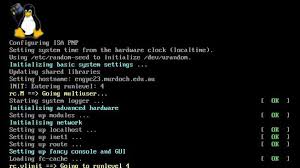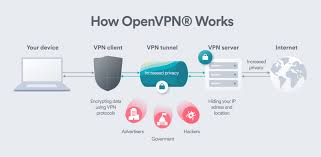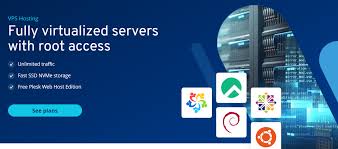Unveiling the Potential: Exploring Open Source CMS Platforms
The Power of Open Source Content Management Systems
Open source content management systems (CMS) have revolutionised the way websites are created, managed, and maintained. One of the leading platforms in this space is OpenSourceCMS, a valuable resource that showcases a wide range of open source CMS options available to users.
Open source CMS platforms offer a host of benefits to users, including flexibility, scalability, and cost-effectiveness. With open source software, users have access to the underlying codebase, allowing for customisation and tailored solutions to meet specific needs.
OpenSourceCMS provides users with the opportunity to explore different CMS platforms through live demonstrations. This hands-on experience allows individuals and businesses to test out various features and functionalities before making a decision on which CMS best suits their requirements.
By promoting transparency and collaboration within the development community, open source CMS platforms foster innovation and continuous improvement. Developers from around the world contribute their expertise to enhance these systems, ensuring that they remain cutting-edge and responsive to evolving technological trends.
Furthermore, open source CMS platforms prioritise security and reliability. With a global community of developers constantly monitoring and updating the software, vulnerabilities are quickly identified and addressed, providing users with peace of mind when it comes to safeguarding their online presence.
Whether you are a small business owner looking to establish an online presence or a developer seeking a robust platform for your projects, exploring open source CMS options through OpenSourceCMS can help you make an informed decision that aligns with your goals and aspirations.
Embrace the power of open source content management systems today and unlock a world of possibilities for creating dynamic, engaging websites that resonate with your audience.
Seven Key Advantages of Open Source CMS
Challenges of Using Open Source CMS: Key Considerations
- Limited official support compared to proprietary CMS solutions
- Potential compatibility issues with plugins or themes from third-party developers
- Steep learning curve for beginners unfamiliar with open source technology
- Security concerns due to the need for regular updates and maintenance
- Less intuitive user interfaces compared to some commercial CMS platforms
- Lack of comprehensive documentation for some lesser-known open source CMS options
Cost-effective
One of the key advantages of open source CMS platforms is their cost-effectiveness. These systems are often available for free, eliminating the need for expensive licensing fees. This makes open source CMS an attractive option for individuals and businesses looking to establish an online presence or manage their content without incurring significant financial costs. By leveraging open source CMS solutions, users can benefit from robust features and functionalities without straining their budgets, making it a practical and affordable choice for those seeking a dynamic web management solution.
Customisable
One of the key advantages of open source CMS is its customisability. Users are empowered with the flexibility to modify and tailor the software to align with their specific requirements and preferences. Whether it involves tweaking the design, adding new features, or integrating third-party tools, the ability to customise open source CMS allows users to create a tailored solution that caters precisely to their individual needs. This level of adaptability ensures that users can build websites and applications that reflect their unique vision and functionality, setting them apart in a competitive digital landscape.
Community support
Open source CMS platforms thrive on the invaluable pro of community support. With a worldwide network of developers dedicated to the cause, users benefit from a wealth of assistance, regular updates, and continuous enhancements. This collaborative approach ensures that open source CMS systems remain dynamic, secure, and at the forefront of technological advancements. The sense of shared responsibility within the community fosters a culture of innovation and mutual support, making open source CMS platforms a reliable choice for individuals and businesses seeking sustainable solutions for their digital presence.
Transparency
Transparency is a fundamental advantage of open source content management systems (CMS) such as OpenSourceCMS. The accessibility of the codebase empowers users to delve into the inner workings of the software, enabling them to scrutinise and validate its security measures and functionality. This level of transparency instils trust and confidence in users, as they have the ability to verify that the CMS aligns with their requirements and standards. By promoting openness and accountability, open source CMS platforms foster a collaborative environment where users can actively participate in ensuring the integrity and reliability of the software they rely on for their online presence.
Innovation
Continuous contributions from developers drive innovation in open source CMS platforms, ensuring they remain up-to-date with industry trends. This collaborative approach to development allows for the integration of new features, improvements in performance, and enhancements in user experience. By harnessing the collective expertise of a global community of developers, open source CMS platforms can adapt to changing technological landscapes swiftly and effectively, providing users with cutting-edge solutions that meet their evolving needs.
Scalability
Scalability is a key advantage of open source CMS systems, allowing websites to expand and evolve in line with growing demands without incurring substantial expenses. With the flexibility inherent in open source software, users can seamlessly adjust their CMS to handle increased traffic, content volume, and functionality without the need for costly proprietary upgrades. This scalability feature empowers businesses and individuals to adapt their online presence efficiently as their needs evolve, ensuring a sustainable and cost-effective solution for long-term growth.
Security
With a collaborative effort to identify and address vulnerabilities, open source CMS platforms prioritise security measures for user protection. The global community of developers working on these platforms ensures that security remains a top priority, with timely updates and patches being implemented to safeguard against potential threats. By harnessing the collective expertise of contributors worldwide, open source CMS platforms offer users a robust and secure environment in which to manage their online content effectively.
Limited official support compared to proprietary CMS solutions
One notable drawback of open source CMS platforms is their limited official support when compared to proprietary CMS solutions. While open source communities often provide robust community-driven support through forums, documentation, and user groups, the absence of dedicated customer support channels can pose challenges for users requiring immediate assistance or tailored solutions. In contrast, proprietary CMS solutions typically offer direct access to professional support teams, ensuring prompt resolution of issues and personalised guidance. This disparity in official support levels highlights a key consideration for organisations evaluating the trade-offs between the flexibility of open source software and the comprehensive support services offered by proprietary alternatives.
Potential compatibility issues with plugins or themes from third-party developers
One significant drawback of open source content management systems (CMS) is the potential for compatibility issues with plugins or themes developed by third parties. While the flexibility of open source software allows for a wide array of customisation options through plugins and themes, there is a risk that updates or changes made to the core CMS may not align seamlessly with these external components. This can lead to functionality issues, design inconsistencies, or even security vulnerabilities if compatibility is not carefully managed. Users of open source CMS platforms need to exercise caution when integrating third-party plugins and themes to ensure a smooth and stable website experience.
Steep learning curve for beginners unfamiliar with open source technology
For beginners unfamiliar with open source technology, one significant drawback of open source CMS platforms is the steep learning curve they may encounter. Navigating the complexities of these systems, understanding the terminology, and grasping the intricacies of customisation can be daunting for those new to the open source landscape. The abundance of features and options available in open source CMS platforms may overwhelm beginners, requiring time and dedication to master the tools effectively. However, with patience, persistence, and access to resources such as tutorials and community support, beginners can gradually overcome this initial hurdle and harness the full potential of open source CMS technology.
Security concerns due to the need for regular updates and maintenance
One significant drawback of open source CMS platforms is the heightened security concerns stemming from the necessity for regular updates and maintenance. While the collaborative nature of open source development often results in swift identification and resolution of security vulnerabilities, users must remain vigilant in keeping their CMS up to date to mitigate potential risks. Failure to promptly apply updates and patches could leave websites vulnerable to cyber threats, underscoring the importance of consistent monitoring and maintenance to uphold robust security measures within the open source ecosystem.
Less intuitive user interfaces compared to some commercial CMS platforms
One drawback of open source CMS platforms is that they may have less intuitive user interfaces when compared to certain commercial CMS solutions. While open source software offers extensive customisation options and flexibility, the trade-off can sometimes be a steeper learning curve for users unfamiliar with the system. Commercial CMS platforms often invest heavily in user experience design to create intuitive interfaces that streamline content management tasks. However, with dedication and familiarity, users can overcome this challenge and harness the full potential of open source CMS platforms for their website needs.
Lack of comprehensive documentation for some lesser-known open source CMS options
One notable drawback of certain lesser-known open source CMS options is the lack of comprehensive documentation available to users. While popular CMS platforms often have extensive guides, tutorials, and community support, smaller or niche CMS solutions may suffer from a shortage of detailed documentation. This can pose challenges for users who require clear instructions on installation, configuration, and troubleshooting. The absence of robust documentation for these lesser-known CMS options can hinder user adoption and limit the potential for widespread usage and development within the open source community.












